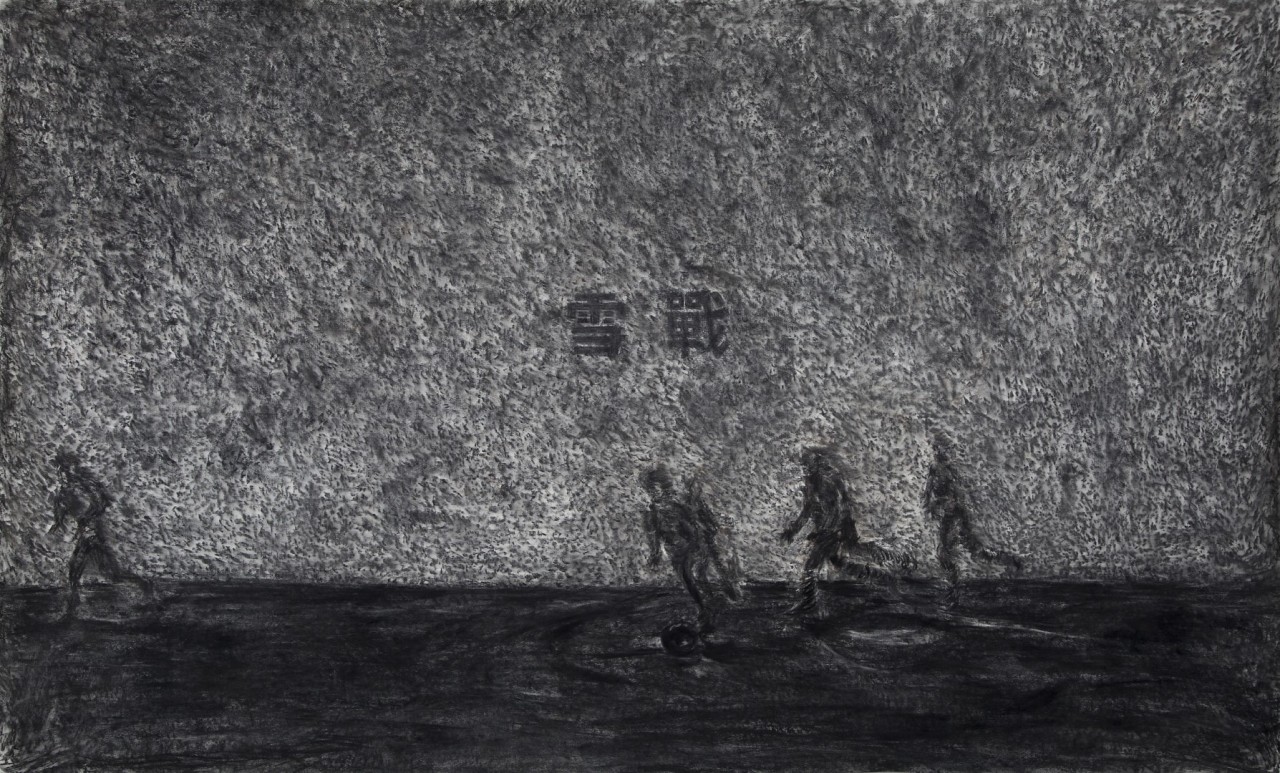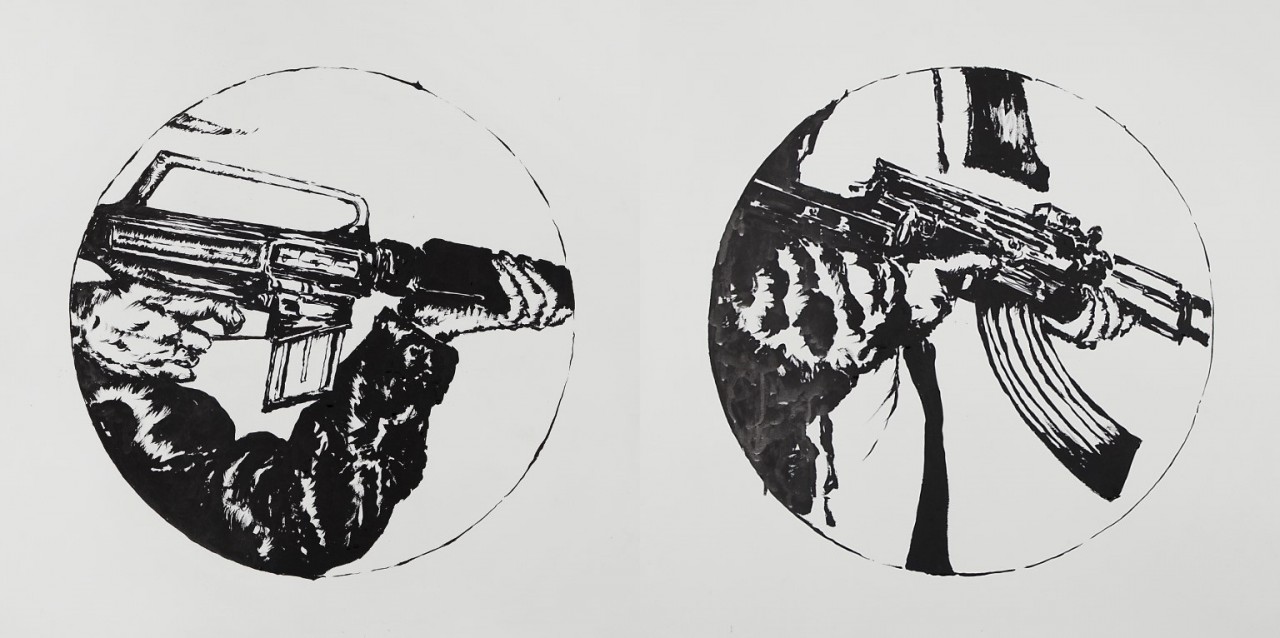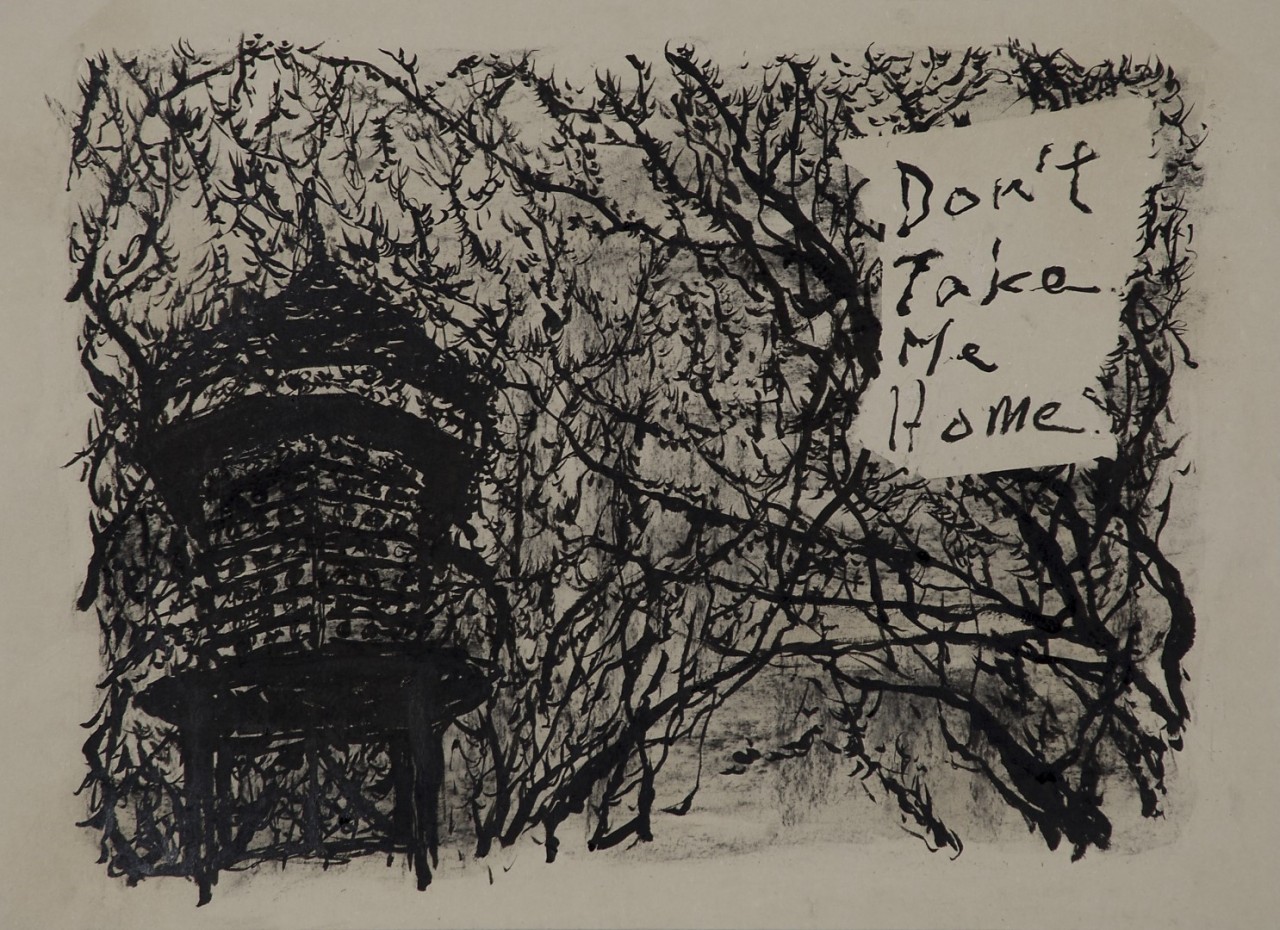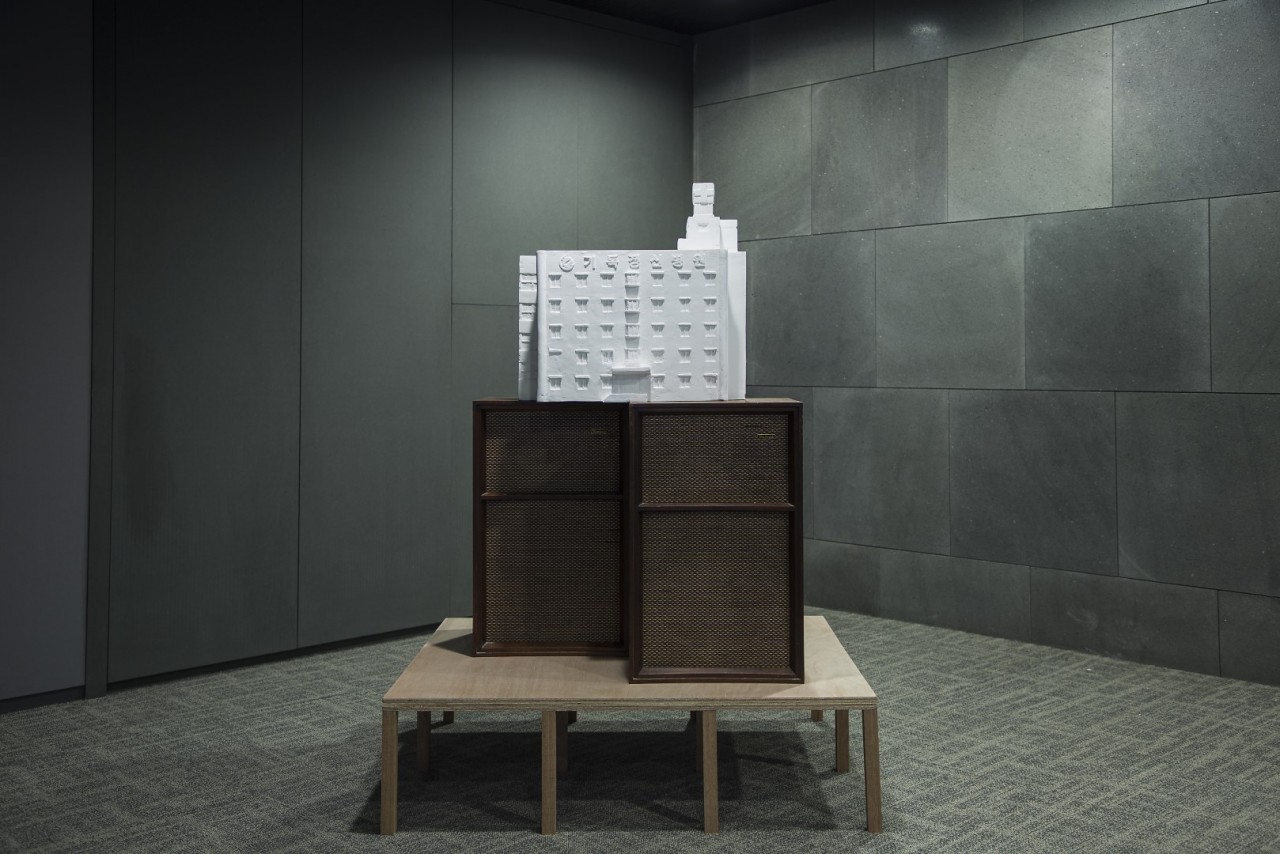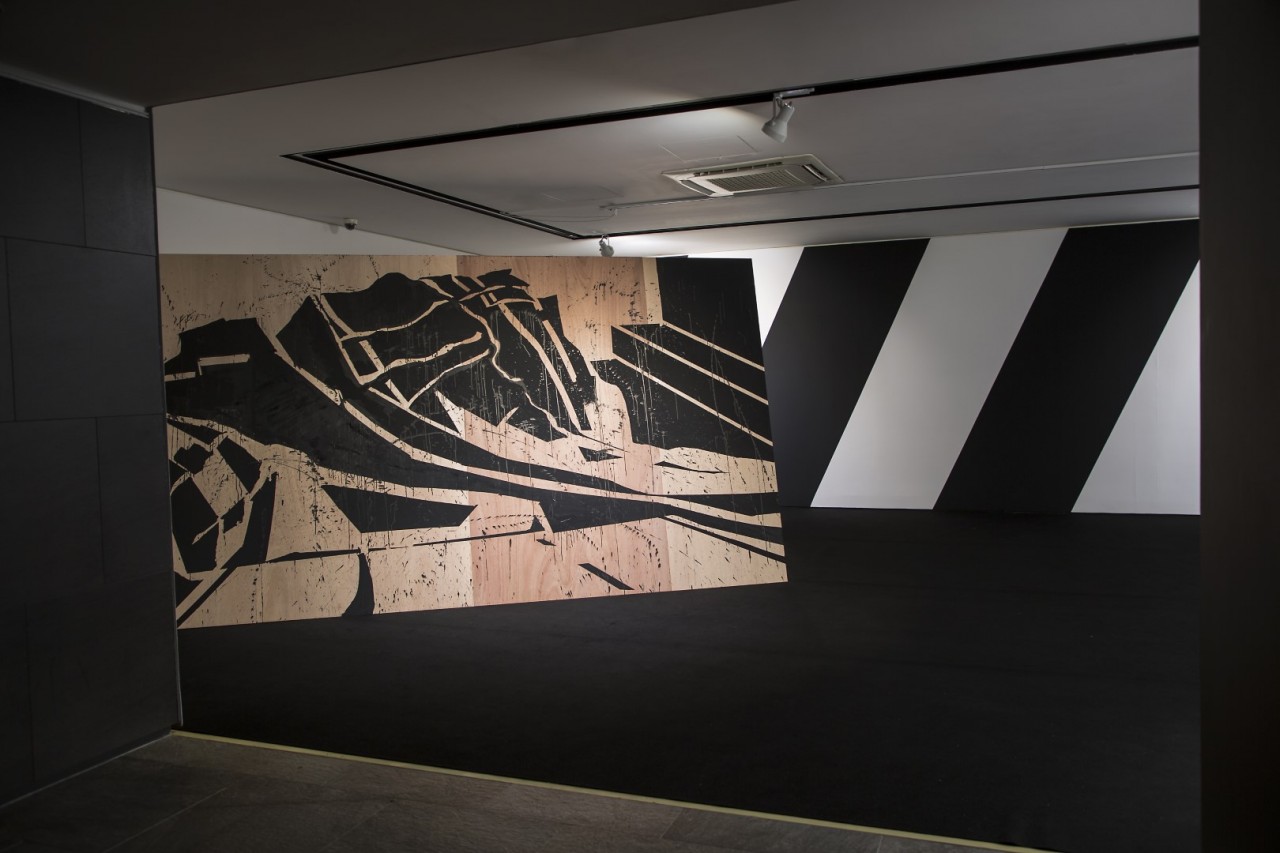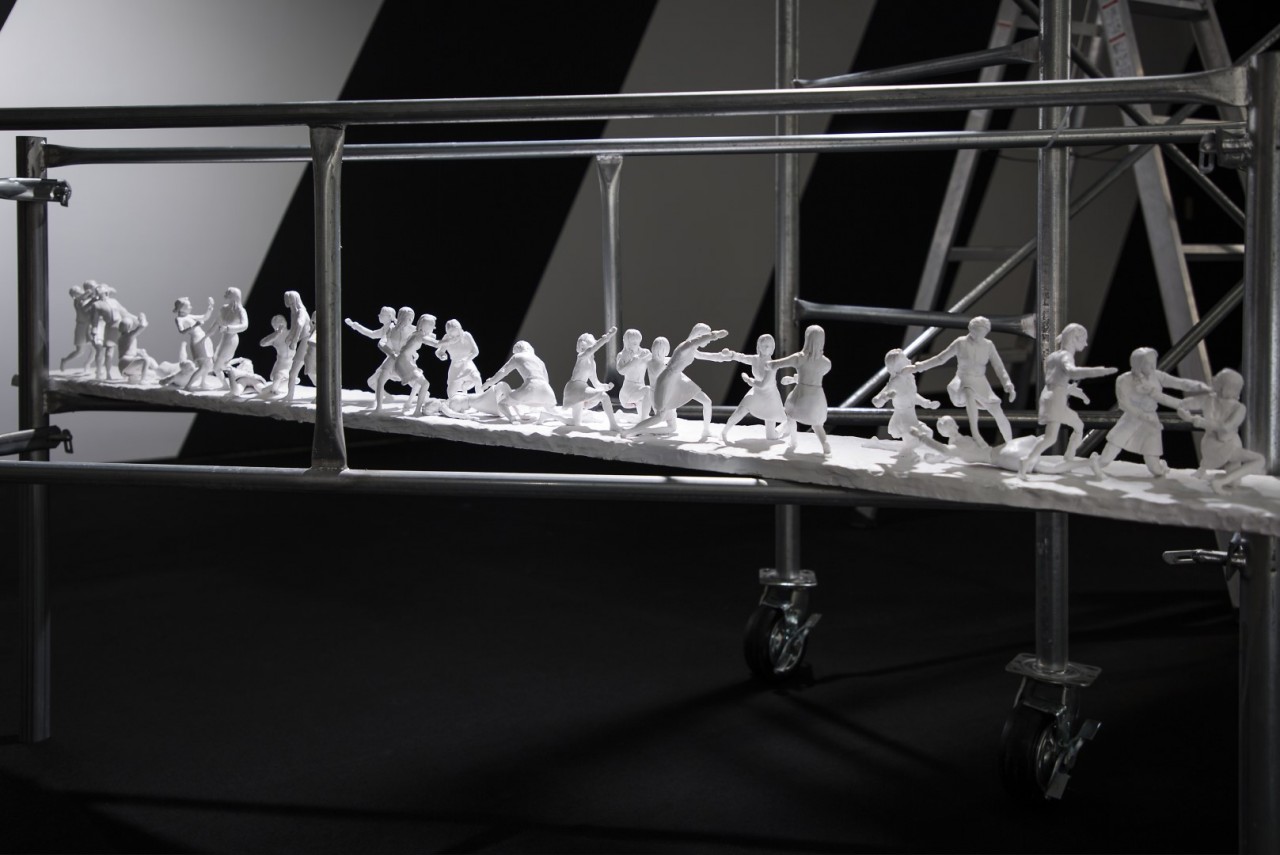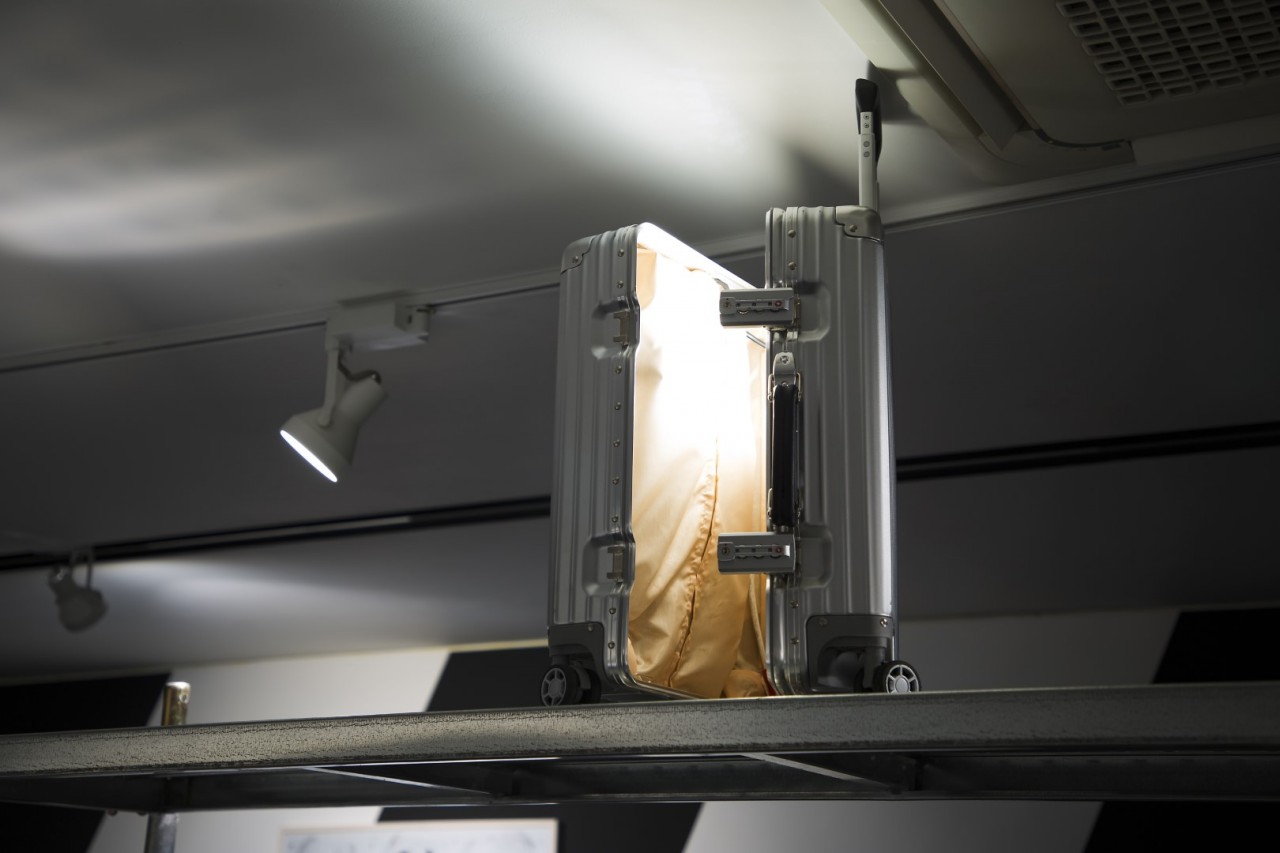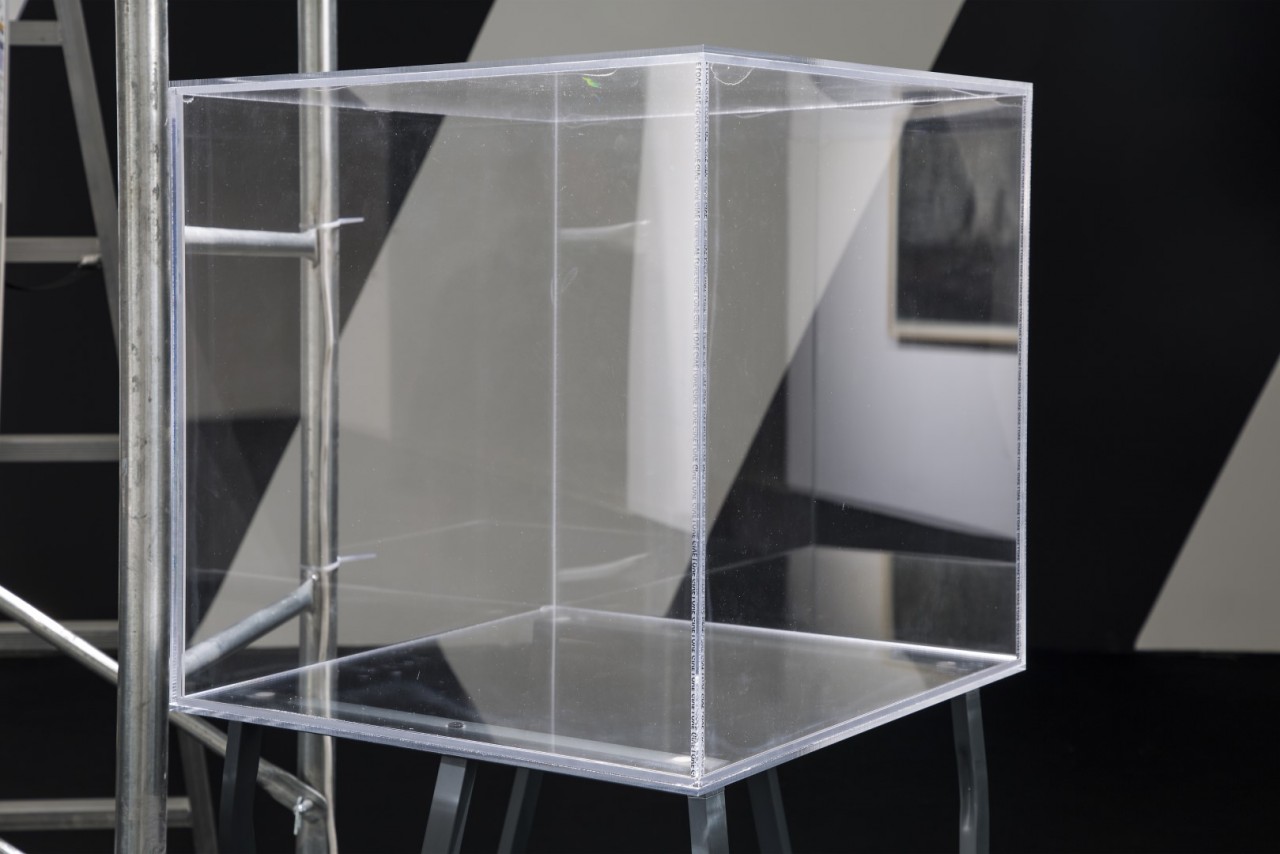Exhibitions
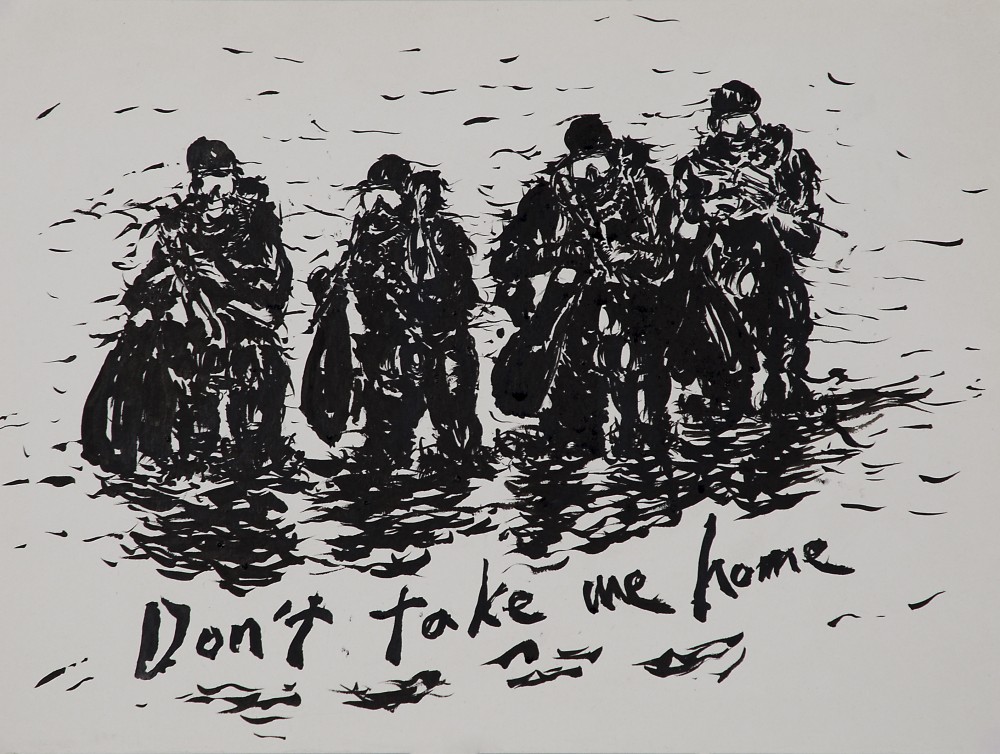
PERIGEE ARTIST #20 최대진
개의 자리
2019.09.06. FRI ~
2019.11.09. SAT
<영문도 모르는 채>
신승오(페리지갤러리 디렉터)
최대진은 자신이 살고 있는 세상에서 벌어지고 있는 일들을 보고 느끼고, 이를 예술이라는 형식으로 어떻게 다시 보여주어야 하는 가에 대하여 천착하고 있다. 그는 지속적으로 드로잉을 그려오고 있다. 이는 아주 특별한 상황을 담아내거나 초현실적인 상상력을 바탕으로 하는 것이 아니라 일상적으로 마주치게 되는 다양한 상황들을 스크랩하듯이 담아내는 것처럼 보이며, 작업의 가장 기본적인 요소가 된다. 한편 이런 드로잉을 기반으로 해서 그는 전시공간에 자신이 하고 싶은 이야기들을 맞추어 작업의 매체를 다양하게 활용해서 구성하는 것에 능하다. 이렇게 그가 전시를 통해 보여주는 이야기는 시대와 장소를 가리지 않고 폭이 넓기 때문에 작품들의 관계성이 쉽게 파악되지 않는다. 이번 글은 이런 그의 예술 활동을 어떻게 읽어 나가야 할지에 대한 구체적인 설명이라기보다는 필자 개인의 관점에서 시작된 하나의 의견으로써, 《개의 자리》 전시를 통해 그가 취하고 있는 작업에 대한 태도와 생각에 접근하기 위한 단편적인 시도임을 밝힌다.
이 전시는 작가가 자신들의 의지와는 상관없이 인간을 대체할 수 있는 최적의 조건이라는 이유만으로 생명체를 우주로 보내는 실험에 이용된 개들에 관한 이야기를 알게 되면서 ‘인간들에게 이 개들은 도대체 어느 자리에 위치 하고 있었는가?’에 대한 의문에서 시작되었다. 《개의 자리》라는 제목은 이 출발점을 상징....
<Without Even Knowing the Reason>
Seung Oh Shin(Director of Perigee Gallery)
Daejin Choi has occupied himself with figuring out how to showcase what he has seen and felt from what is happening in the world in the form of art. He has been consistently involved in drawing. His drawings are not meant to portray a specific situation and are not based on his surreal imagination; instead, they seem to feature a variety of situations in which he is placed in his everyday life, as if making a clipping. Drawing has become the foundation of his work. He is also adept at diversely exploiting the media of his work to embody what he would like to say in the venue on the basis of drawing. As the stories he showcases through his exhibitions are in a wide spectrum, it is not easy to grasp the relationships they have with his works. This article presents an opinion deriving from my individual perspectives as opposed to a concrete explanation and description of his artistic activities. I reveal how the exhibition Place of dog makes a foray into gaining access to his attitude toward and thoughts on artistic work.
Choi tells....
신승오(페리지갤러리 디렉터)
최대진은 자신이 살고 있는 세상에서 벌어지고 있는 일들을 보고 느끼고, 이를 예술이라는 형식으로 어떻게 다시 보여주어야 하는 가에 대하여 천착하고 있다. 그는 지속적으로 드로잉을 그려오고 있다. 이는 아주 특별한 상황을 담아내거나 초현실적인 상상력을 바탕으로 하는 것이 아니라 일상적으로 마주치게 되는 다양한 상황들을 스크랩하듯이 담아내는 것처럼 보이며, 작업의 가장 기본적인 요소가 된다. 한편 이런 드로잉을 기반으로 해서 그는 전시공간에 자신이 하고 싶은 이야기들을 맞추어 작업의 매체를 다양하게 활용해서 구성하는 것에 능하다. 이렇게 그가 전시를 통해 보여주는 이야기는 시대와 장소를 가리지 않고 폭이 넓기 때문에 작품들의 관계성이 쉽게 파악되지 않는다. 이번 글은 이런 그의 예술 활동을 어떻게 읽어 나가야 할지에 대한 구체적인 설명이라기보다는 필자 개인의 관점에서 시작된 하나의 의견으로써, 《개의 자리》 전시를 통해 그가 취하고 있는 작업에 대한 태도와 생각에 접근하기 위한 단편적인 시도임을 밝힌다.
이 전시는 작가가 자신들의 의지와는 상관없이 인간을 대체할 수 있는 최적의 조건이라는 이유만으로 생명체를 우주로 보내는 실험에 이용된 개들에 관한 이야기를 알게 되면서 ‘인간들에게 이 개들은 도대체 어느 자리에 위치 하고 있었는가?’에 대한 의문에서 시작되었다. 《개의 자리》라는 제목은 이 출발점을 상징한다. 하지만 전시는 온전히 이러한 개들에 관한 이야기에 머무르지 않고 다시 우리들이 살고 있는 세상으로 확장된다. 전시장에서는 다양한 작품과 이야기들을 만나게 되는데, 먼저 전시 제목에서 이미 등장한 개들의 초상이 있으며, 폭설 속에서 선수들이 뒤엉켜서 축구 경기를 하는 상황, 여행 가방에서 들려오는 호메로스가 쓴 《일리아드 Iliad》의 첫 문장인 ‘분노를 노래하소서, 여신이여!’를 의미하는 모스 부호, 여고생들이 뒤엉켜 싸우고 있는 모습, 광주지역의 한 정신요양병원 건물과 함께 들려오는 벌레 소리, M-16과 AK 소총을 들고 있는 모습, 한국 전쟁 이후 남과 북 그 어디도 선택하지 않은 전쟁포로들을 연상시키는 ‘Don`t take me home’이라 쓰여져 있는 여러 풍경 등 다양한 드로잉과 설치 작업들이 나타난다. 이것을 우리는 어떻게 인식해야 하는가? 물론 이러한 작품 하나하나에는 무엇인가를 상징하는 이미지와 어떤 상황을 직접적으로 언급하는 문구가 등장한다. 그러나 이렇게 단편적인 작품을 하나씩 살피면서 연결시켜 나가다 보면 서로 다른 시간과 공간을 넘나드는 이야기로 인해 상호 연관성을 읽어내기가 힘들다. 이렇듯 그의 작업은 누구에게는 쉽게 의식적으로 스며들어 오랫동안 남겨질 수도 있으며, 또 다른 누구에게는 어렵고 복잡하게 다가오며 무의식적으로 스며들었다 순식간에 사라져 버릴지도 모른다. 다만 확실한 것은 작가는 이러한 파편적인 전시의 상황을 지극히 보편적이고 당연한 것으로 인식하고 우리에게 자신만의 일관적인 형식으로 보여 준다는 점이다. 그렇다면 이런 파편적인 전시에서 발생하는 단편적 이야기들을 하나의 짜임으로 읽을 수 있는 방법은 무엇일까? 필자는 이를 최대진이 취하고 있는 예술활동에 대한 태도에서 찾을 수 있다고 생각한다. 작가는 항상 자신이 모순적인 상황에 처해져 있다고 말한다. 여기서의 모순은 이것과 저것, 여기와 저기를 그리고 중심부와 주변부를 동시에 바라보며 인식하는 것이다. 그는 한 곳에 초점을 맞춰서 하나의 사고에 동조하여 자신을 고정시키고 세상을 바라보기보다는 모든 것을 관조하며 언제든 전환할 수 있는 유동적인 가능성을 스스로 획득하고자 한다. 따라서 그는 어떤 특정한 사건과 상황을 모티브로 삼으면서도 단순히 현실을 있는 그대로 재현하여 정보를 전달하고자 하지 않는다. 또한 특정한 사건의 숨겨진 이야기를 전달하면서 어떤 감정적 잔여물을 남기지도 않는다. 오히려 그에게는 무엇을 작업으로 전환시킬 것인가에 대한 결정과 선택만이 남은 듯하다. 이렇게 표면적 형식으로 보이는 그의 작업은 시간과 공간에 복잡하게 엮여 있는 사람들과 사회 집단 속 관계에서 발생하는 상황들을 모순적으로 모아놓은 것에 지나지 않는다. 결국 내용적으로 쉽게 연결되지 않는 작업들은 작가가 처한 모순적 상황에서 스스로 어느 한쪽에도 치우치지 않게 균형을 잡기 위한 방편인 것이다. 그리고 사실상 그에게는 이렇게 하는 것 말고는 어떤 선택지도 없는 것으로 보인다. 작가는 언제나 자신이 담고자 하는 이야기에 어울리는 최적의 방식을 찾는다고 한다. 그렇다면 그가 말하는 최선의 혹은 최적의 방식은 결국 작가로서 어느 한쪽에 치우치지 않고 자신만의 시선으로 최대한 자유롭게 움직이는 것 이외에 할 수 있는 게 없는 그가 처한 현실을 그대로 보여주는 것인지도 모른다. 이렇게 작가의 시선은 동시대를 바라보는 데에 있어서 긍정과 부정, 감정과 이성, 관념과 실존 사이 어딘가에 존재한다. 그러므로 우리가 《개의 자리》에서 읽어 내어야 하는 것은 동시대성을 고스란히 담아내는 표면적인 서사들이 주는 정보가 아니라, 작가 개인이 경험하고 있는 상황과 시간을 작품이라는 형태로 어떻게 물질화 혹은 실체화시키고 있는지에 대한 예술적 태도일 것이다.
그에게 있어 작가란 어떤 사람인가? 작가는 그 누구도 아닌 사람, 무엇인가 확정되지 않는 사람이며, 이들은 무엇인가를 계속해서 외부로 표현하는 존재이다. 그렇다면 작가는 무엇을 어떻게 바라보고 이야기하려 하는가? 우리 눈에 비치는 세상에서의 일상이 만약에 거짓 하나 없고 모든 것이 그대로 드러나는 삶이라고 한다면, 누군가에게는 이 순수한 진실이 두려운 것일 수 있다. 그렇기에 지금 미디어에서 쏟아 내고 있는 거짓과 환영을 우리가 살아가는 데에 필요한 요소라고 받아들이고 있는지도 모른다. 최근의 미디어들에서 수많은 분야의 전문가들이 무엇인가를 분석하고 예측하는 것은 사실상 이것들이 실제로는 허상에 불과하고, 예측이 불가능하다는 것을 망각하게 만들며, 종국에는 개개인 스스로 자기 자신을 믿지 못하게 만든다. 그가 생각하는 작가는 현재의 전문가들이 행하고 있는 분석가, 예언자 혹은 영도자의 역할을 맡는 것이 아니다. 오히려 작가의 역할은 우리의 삶에서 지금 현실을 어떻게 이해하고 받아들여야 하는지에 대해 각자 스스로 고민하고, 이를 통해 자신의 내면을 새롭게 재인식하는 계기를 마련하는 데에 있다. 그렇기에 그는 우리가 때로는 시대에 역행하고 다시 동조하기도 하면서 어떻게 실천해야 하는지 스스로 답을 구하는 노력을 통해 ‘나’의 현실을 되찾는 역량을 키워 나가기를 바라고 있다. 여기서 다시 전시된 작업들로 돌아와 보면, 그가 다루는 소재들은 어떻게 보면 이미 특별한 것이 아니다. 이전 시대에만 해도 쉽게 공유되지 못했던 것들은 온라인을 통해 손쉽게 접속되어 찾아볼 수 있는 일상적인 이야기들로 변해 버렸다. 그러나 아무리 변했다 하더라도 여전히 우리가 그 일상적인 것들로 인해 그의 작업에 등장하는 대상들처럼 영문도 모른 채 사회적 약자로서 위협받고 굴복하고, 자신의 자리를 위태롭게 만드는 상황으로 내몰리는 것에는 변함이 없다. 그렇기에 자신의 삶을 지키기 위해 어쩔 수 없는 폭력에 휩싸이기도 한다. 이렇게 우리는 삶을 살아가면서 이유도 알지 못하는 사이에 발생하는 수많은 부당하고, 어이없는 일들을 겪으면서, 현시대에 대해서 막연하게 불안정한 무기력과 분노를 느끼면서도 자신도 모르는 사이에 이러한 분위기에 순응한다. 다시 말하면 우리가 경험하는 것들은 더 이상 어떤 자극을 발생 시켜 우리를 움직이게 하는 것이 아니라 무감각해지고 일시적인 것에 고정시켜 버린다. 표면적으로는 의견을 내고 푸념하면서 밖으로 소리를 높이지만, 스스로 겪고 있는 내면적 사실을 입 밖에 내어 말하는 사람은 많지 않다. 그렇다면 우리는 자신의 내면적 진실을 어떻게 되찾아야 하는가? 그것은 외면과 탈주를 통해 일시적 안도감에 머무는 것이 아니라 지독스럽게 스스로에게 냉정해지면서 감정을 억누르며 거북함 속에서 보아야만 하는 모든 것들을 동시에 살펴야 할 것이다. 따라서 작가는 자신의 예술활동을 통해 멈춰버린 것들을 관객들의 내면에 침잠해 있는 개인적인 경험, 관념과 연결시켜 되살려내고자 한다. 그리고 다시금 지금 현실에 저항해 나가기 위한 가교(架橋)의 역할을 하고자 한다. 그러나 이를 선동하거나 선두에서 이끌어나가는 것이 아니라 관객들 각자가 표현해야 할 몫으로 남겨둔다. 따라서 그가 전시나 작업을 통해 자신의 목소리를 내고 있는 것은 누군가 들어줄 것이라는 전제로 이야기를 던지는 것이 아니라 온전한 개인의 목소리에만 집중하여 어떤 외부의 반향도 기대하지 않은 채 자기 자신에게 건네는 혼잣말과 같다.
정리해 보자면 우리는 모두 스스로 인식하지 못할 정도로 무감각해지고 있다. 반면에 현대사회는 끊임없이 계산하고, 측정하고, 예측한다. 이런 세상에서 우리는 개인의 감각적인 경험에 의한 것을 불확실한 판단으로 인식하며 믿지 않는다. 그리고 집단의 흐름에 몸을 맡기고 영문도 모르는 채 살아간다. 그렇다면 우리가 살아가야 하는 삶이란 무엇인가? 작가는 우리를 둘러싸고 있는 모순적 세상에 대해 분석적으로 객관화시켜 인식하는 것뿐만 아니라 우리를 관통하고 있는 그 무엇인가를 스스로 사유하며 살고자 하는 태도의 균형이 필요하다고 말한다. 따라서 그에게 있어서 전시는 작품과 작품, 작품과 관객, 작가와 관객이 서로에게 침투하여 스며들 수 있는 상황을 만드는 것이다. 그의 작품들은 모두 이미 일어난 일을 토대로 그 이야기들을 가져오지만 그 자체로 사실을 고발하거나 어떤 감정적 재현은 아니다. 그는 모든 사건과 대상의 경중을 나누고 분석하는 것이 아니라 있는 그대로의 위치에 놓고 동등하고 동질적인 상태에서 다시 이야기하고자 하는 것이다. 그렇기에 시작은 명확한 이야기를 바탕으로 출발하지만 전시에서는 상호 연관성 없이 자유롭게 나타난다. 이는 결국 본격적인 이야기는 관객 스스로의 동력에 의해서 작동될 것이기 때문이다. 따라서 그의 전시에서 중요한 것은 관객들이며, 그들이 각자 자신과 연결할 수 있는 공통된 리듬을 발견하는 것이다. 그렇기에 이런 전시 방식은 지금과는 다른 의미를 발생시키는 또 다른 의미를 획득하게 하기 위해서 ‘나’를 세상과 연결하면서 자연스럽게 발생하는 함축과 발산 혹은 저항과 동조와 같은 모순적인 상황 속에서 불확정성을 가질 때 발생하는 가능성에 대해 이야기하고 있는 것이다. 이렇게 그의 작업은 어떤 명확한 주장으로 관객에게 번역되거나 해석되지 않으며, 보는 관객들이 스스로 만들어 내는 연결을 통해서 완성되는 것을 유도한다. 이를 위해 최대진은 늘 실제를 예리하게 바라보고 인식하고 실천하기 위해 자신이 관심 가는 것들을 선택하고 집중하여 작업을 하고자 한다. 이런 방식은 작가에게 있어서 자신이 생각하는 진실에 대한 신념을 가지고 삶을 살아가기 위한 스스로의 다짐이다. 결국 《개의 자리》는 파편적이면서도 보편적이고, 존재론적이면서도 관념적이며, 혼자이면서도 혼자가 아닌 유동적으로 움직이는 순환의 고리로 연결되어 있는 우리의 일관된 현실을 보여주는 증거의 자리이다. 그리고 우리의 삶을 더 이상 영문도 모른 채 살아가지 않기 위한 태도에 관한 이야기이다.
Seung Oh Shin(Director of Perigee Gallery)
Daejin Choi has occupied himself with figuring out how to showcase what he has seen and felt from what is happening in the world in the form of art. He has been consistently involved in drawing. His drawings are not meant to portray a specific situation and are not based on his surreal imagination; instead, they seem to feature a variety of situations in which he is placed in his everyday life, as if making a clipping. Drawing has become the foundation of his work. He is also adept at diversely exploiting the media of his work to embody what he would like to say in the venue on the basis of drawing. As the stories he showcases through his exhibitions are in a wide spectrum, it is not easy to grasp the relationships they have with his works. This article presents an opinion deriving from my individual perspectives as opposed to a concrete explanation and description of his artistic activities. I reveal how the exhibition Place of dog makes a foray into gaining access to his attitude toward and thoughts on artistic work.
Choi tells a story about dogs that were sent to space to test the survivability of spaceflight against their will for no other reason than that they could substitute for humans. This exhibition started from the question, “What position do such dogs take in place of humans?” The title Place of dog is symbolic of this departure point. The exhibition, however, expands to the world we inhabit and departs from stories about dogs. A variety of works and stories are on show at the exhibition: portraits of the dogs mentioned in the exhibit title; a situation in which soccer players are intertwined in heavy snowfall; Morse codes referring to “The wrath sing, goddess!”, the first line of Homer’s The Iliad; female high school students who are tangled in a struggle; a mental hospital in Gwangju and the chirping of an insect; people holding M-16 and AK rifles; and various scenes featuring “Don’t take me home” which remind viewers of war prisoners who belonged to neither the North nor the South after the Korean War. These scenes are featured in a wide array of drawings and installations.
How should they be appreciated? Of course, each work features images that symbolize something and text that refers to a specific situation. Any interconnectivity between them, however, is hard to find due to stories that cross the boundaries between different times and spaces, even if we are able to relate fragmentary pieces to one another and review them one by one. As such, Choi’s works can linger behind for a long time after consciously soaking into someone, but they are perhaps too intricate and difficult to understand since they suddenly die away after infiltrating into others. The one thing that is indisputable is that the artist regards such a fragmentary situation of the exhibition as something quite natural and general and shows it in his own consistent form.
If this is the case, what are some ways to interpret such fragmentary stories in this fragmentary exhibition? I believe one such method can be found in Choi’s attitude toward his artistic activities. Choi explains that he is always placed in contradictory circumstances. These include simultaneously viewing and perceiving this and that, the here and the there, and the center and the periphery. He aims to eschew fixing himself and viewing the world with just one focus and idea. He tries to acquire flexible possibilities which he can convert into something at anytime while contemplating everything. It would be unlike him to merely convey information through a representation of reality as it is while taking motifs from specific events and situations. He also leaves no emotional residue while conveying a concealed narrative. All that remains is for him to choose what he has to convert into an artwork.
His work seems to be a contradictory collection of circumstances that take place in relationships among people and groups that are intricately bound up with one another in space and time. After all, his works that have no connection in terms of content are a means to bring a sense of balance to the contradictory circumstances he faces. In fact, he has no choice but to do this. Choi says that he looks for the best way suited to a story he tries to contain. What he describes seems to be something that displays the reality he faces as it is: the only thing he can do as an artist is to move as unrestrictedly as possible without being one-sided. As such, his gaze rests somewhere between affirmation and negation, emotion and reason, and idea and existence. What should be interpreted from Place of dog is not information offered by superficial narratives but an artistic attitude on how to materialize or realize the circumstances and time an artist has experienced.
How does he describe artists? An artist is someone who is undeterminable and continues to express something externally. Then what does an artist try to see and describe and how does he or she do it? If everything in our daily life was sincere and truthful, anyone could be afraid of this pure truth. As a result, we would probably embrace the falsities and illusions produced by the media as essential prerequisites in our lives. Analyses and predictions made by experts in countless fields inform us of the fact that they are nothing short of false images and making conjectures is impossible; in the end they lead each individual to not trust himself. The artist Choi considers does not assume the role of an analyst, prophet, or leader usually played by an expert. He believes the role of an artist should be concerned with how to understand and accept our reality and that they should have an opportunity to reach a new understanding of their inner self through this. Thus, he wishes for us to foster our ability to regain our reality through efforts to seek an answer to the question concerning how to practice while at times going against or going along with the times.
In regard to the works on show at this exhibition, the subject matter he has addressed is already, in a sense, nothing special. Things that could not be shared easily before have turned into something usual and common that can easily be found online. Circumstances in which we are threatened, yield as members of the socially weak, and are driven to a situation in which our position is perilous “without even knowing the reason” remain unchanged even though other things have become different. So we are at times inevitably involved in violence in order to keep our lives. We undergo innumerably unfair, quite outrageous things when living our lives. We adapt ourselves to this atmosphere while feeling ambiguously insecure lethargy and rage. That is, what we have experienced does not make us move with some impetus. Instead, it makes us become lethargic or fixed to something temporary. Not many people speak out what they have internally undergone while superficially expressing their views or complaints. If this is the case, how should we find our inner truth? We have to simultaneously review everything we have to see in discomfort while we have to remain coldhearted and swallowing our feelings. Accordingly, the artist tries to revive what has stopped through his artistic practices, associating them with viewers’ inner experiences and ideas. He once again tries to act as a bridge to hold out against realities. And yet, he does not agitate or lead it but sets aside it as a portion each viewer has to express. Therefore, the voice he lets out through his work or exhibition is like a monologue given to himself without any expectation of an outside response, not provided on the assumption that someone hears it.
In conclusion, we have become insensitive to perceiving ourselves. In contrast, others constantly reckon, gauge, and predict things in contemporary society. In this world we do not believe in things that derive from an individual’s sensuous experiences since we perceive them as uncertain. We live without even knowing the reason, relying on the stream of a group’s decisions. What is the life we have to live? Choi says we need to analytically objectify and perceive the contradictory world that surrounds us and maintain balance when we ruminate over something that penetrates us. To him, exhibitions are meant to bring about a circumstance in which relationships among works and between a work and the viewer as well as the artist and the viewer filter into one another. While his works generate narratives on the basis of what has already happened, they are not accusations or emotional representations. He aims to restate every event and object in a coordinative, homogenous state in a way that does not classify or analyze their gravity. As a result, his works start from a definite narrative and appear untrammeled by any sense of interconnectivity present in the exhibition. It is for this reason that any narrative will work through the viewer’s motivating power. What is most important in his exhibition is the viewer and discovering common rhythms with which they are able to associate.
This type of exhibition makes mention of the possibility that arises when his work contains a degree of uncertainty under a contradictory circumstance of implication and release as well as resistance and agreement which are generated when he relates himself to the world in order to acquire another meaning. As such, his work is not translated or interpreted as something with an apparent assertion and is induced to be completed through a connection that viewers make for themselves. To achieve this, Choi selects what he is interested in keenly observing and practicing, focusing his energy on executing his work. This practice is his own resolution to live his life with a belief in what he considers to be the truth. In the end, Place of dog is a place of evidence that doubles as a showcase of our consistent reality linked with a fluidly moving ring that is both fragmentary and universal, ontological and ideational, and simultaneously left alone and not alone. It is also a story about our mindset to not live our lives without even knowing the reason.
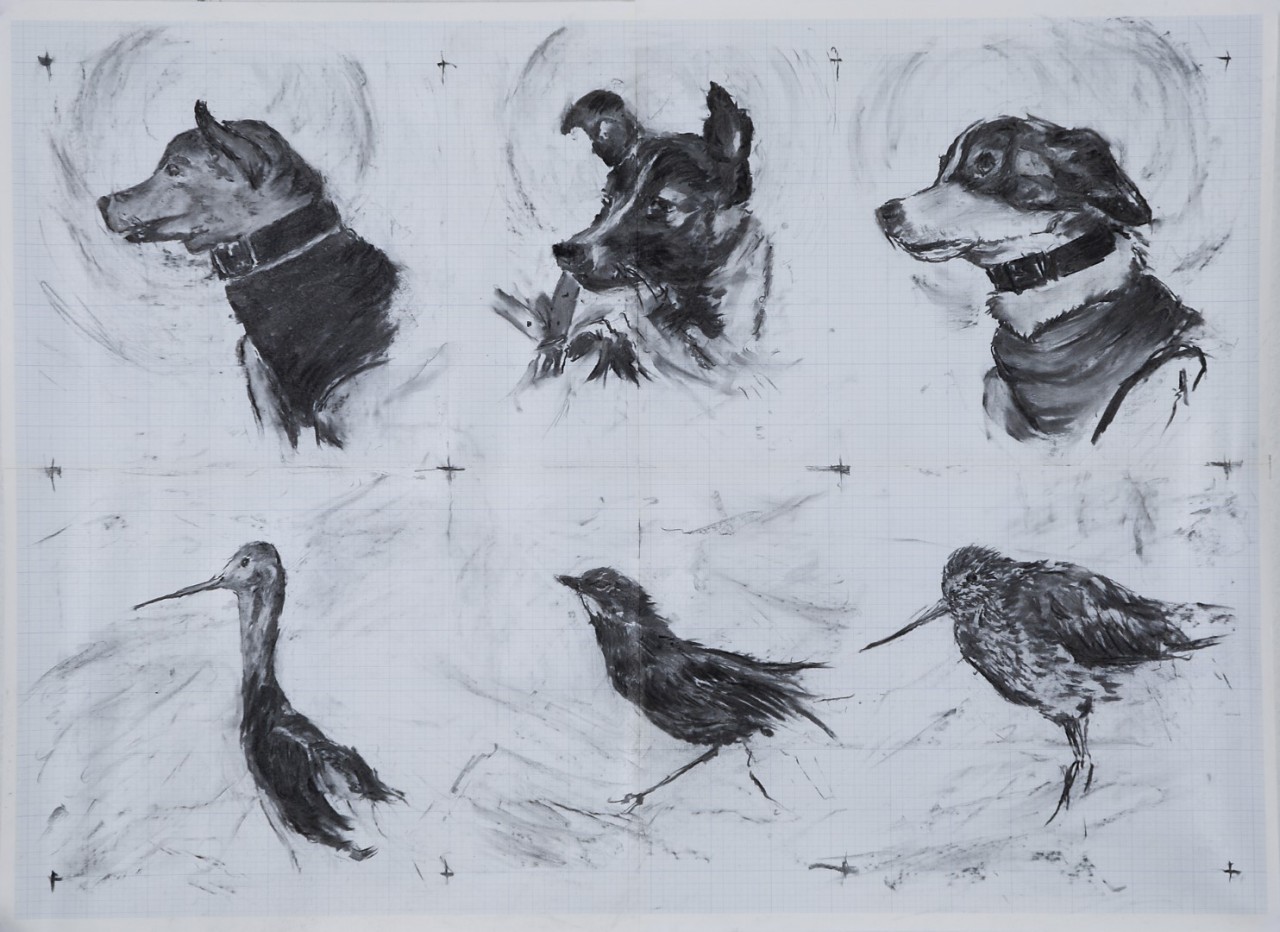 벨카, 라이카, 스트렐카 그리고 이름없는 새마리 철새들 / Belka, Laika, Strelka and nameless 3 migrotary birds, 2019, Charcoal on graph paper, 75 x 105cm
벨카, 라이카, 스트렐카 그리고 이름없는 새마리 철새들 / Belka, Laika, Strelka and nameless 3 migrotary birds, 2019, Charcoal on graph paper, 75 x 105cm
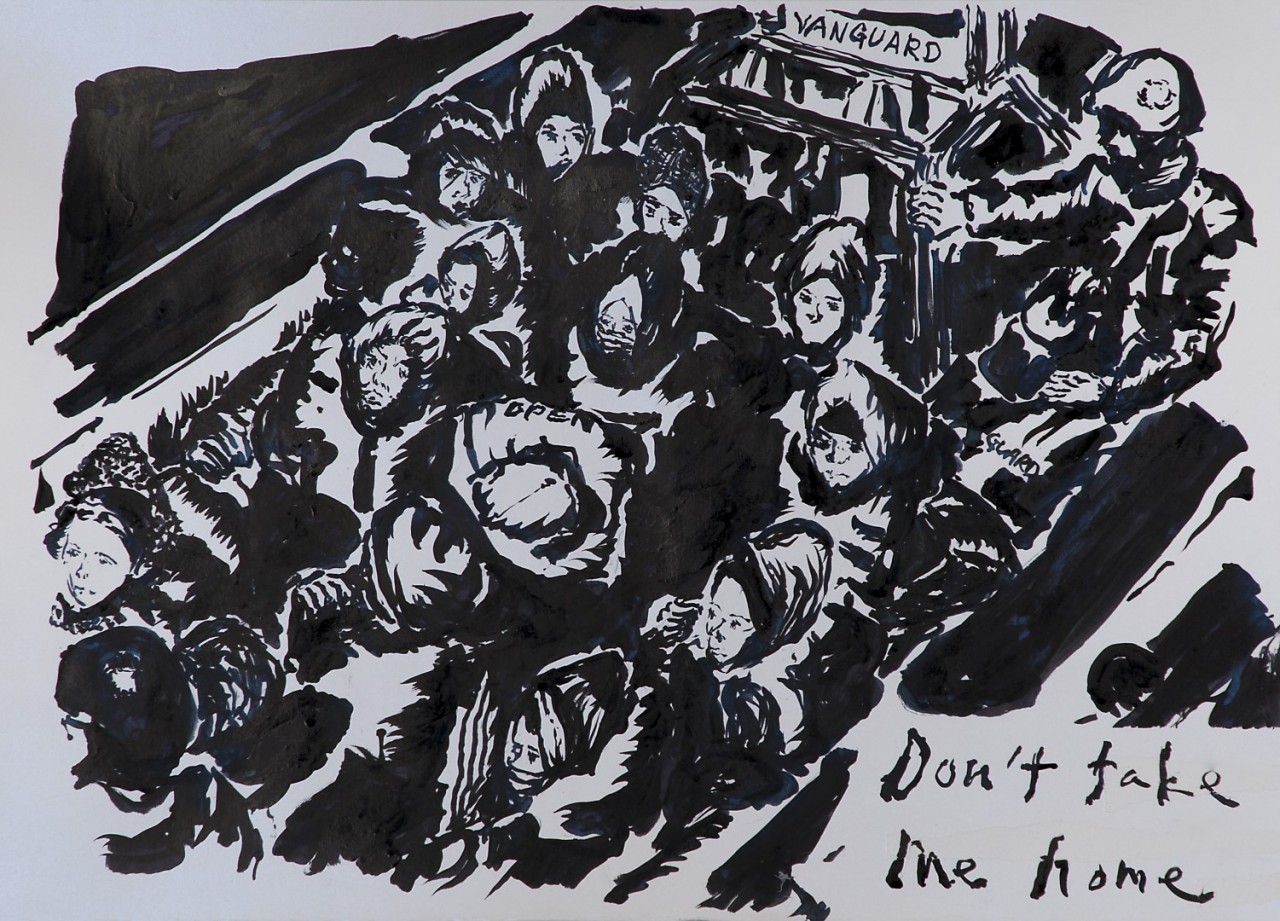 날 집에 데려 가지마, 소말리아 해, 인도양 / Don't take me home, Somali sea, Indian ocean , 2019, Chinese ink on paper, 54 x 39cm
날 집에 데려 가지마, 소말리아 해, 인도양 / Don't take me home, Somali sea, Indian ocean , 2019, Chinese ink on paper, 54 x 39cm
 날 집에 데려 가지마, 후쿠시마 발전소 / Don't take me home, Fukushima powerplant, 2019, Charcoal & chinese ink on paper, 54 x 39cm
날 집에 데려 가지마, 후쿠시마 발전소 / Don't take me home, Fukushima powerplant, 2019, Charcoal & chinese ink on paper, 54 x 39cm
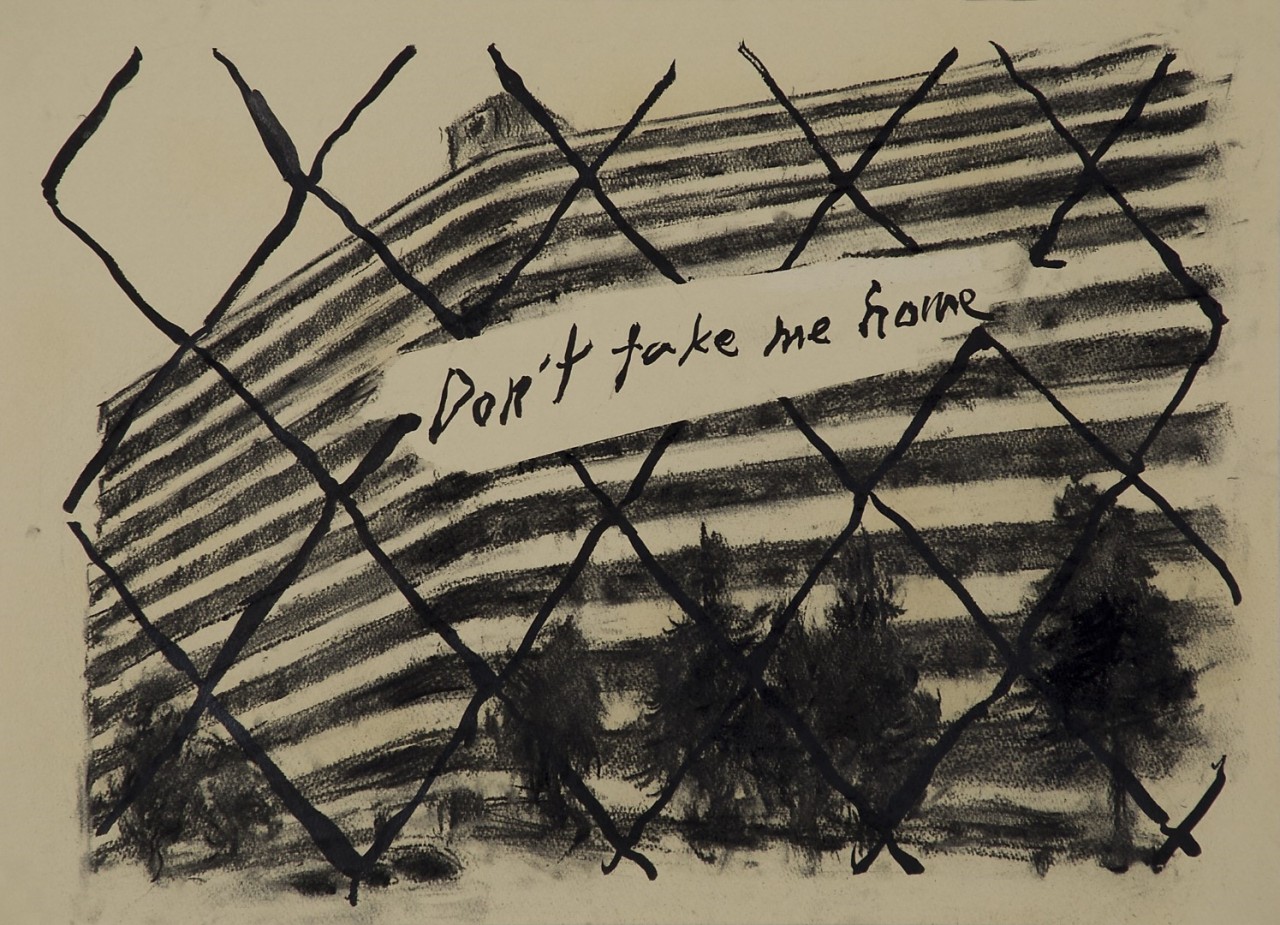 날 집에 데려 가지마, 은마 아파트/ Don't take me home, Eun-ma apartment, 2019, Charcoal & chinese ink on paper, 54 x 39cm
날 집에 데려 가지마, 은마 아파트/ Don't take me home, Eun-ma apartment, 2019, Charcoal & chinese ink on paper, 54 x 39cm



